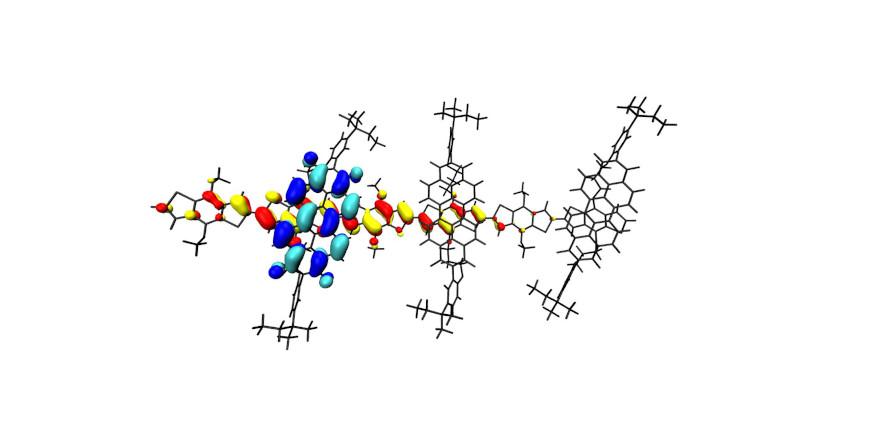
In a paper published today in Nature Chemistry, researchers from the University of Cambridge, Imperial College London and Queen Mary University London describe a new method which improves the understanding of these organic solar cell arrangements.
Organic solar cells
Organic solar cells use small organic molecules or organic polymers to absorb and transform sunlight into electricity. The molecules can be produced synthetically at high throughput, and the resulting cells are lightweight, flexible and inexpensive to make. This makes them potentially cheaper, sustainable and more flexible than traditional cells made of silicon.
A mystery
When lights hits an organic solar cell, it forces the molecules to transfer electrons, which generates an electrical current. The efficiency of the process depends on the arrangement of the molecules and how well they interact.
One problem is that organic solar cells are still much less efficient than silicon solar cells. Being able to understand and improve the molecular arrangements in the cells is the key to making them more efficient and commercially competitive. However, the molecular configurations are difficult to characterize because they are buried deep within the system, and their structure has remained a mystery.
Now co-first authors Jeroen Royakkers of this department and Hanbo Yang of the Department of Physics at Imperial College London have come up with a new way to construct model interfaces, which will allow scientists to study the molecular structures in detail to determine which structures are more efficient.
A combined theory and experiment approach
Royakkers and Yang designed a synthetic strategy to design and control model interfaces. They then used these interfaces to study and model the efficiency of molecular transfer at different locations.
“A key approach was to simulate the molecular dynamics of these materials, and then use these as ‘snapshots’ that we put back into the quantum mechanical simulations. At room temperature, these materials are very flexible and constantly moving around,” said co-author Doctor Jarvist Moore Frost of Imperial College London.
“We can then directly simulate the laser measurements, but we have the information from our calculations about where the quantum-mechanical wavefunction of the electron is moving from and to.”
“The aim of this investigation was to study the processes that control the initial charge separation process, rather than to achieve high power conversion efficiency in these devices,” said Royakkers. “But our models do show a new design strategy that could result in higher efficiency photon to electric energy conversion.”
Below: Simulation of model-interface in an organic solar cell, showing the motions of the atoms.
“Our research delves into the inner workings of light-harvesting molecules by analysing the colours of light they emit,” said co-author Dr Flurin Eisner, Lecturer in Green Energy at Queen Mary University of London. “We observed distinct colour shifts between molecules that were arranged in different configurations.
“This told us that the arrangement of molecules matters a lot for how efficiently they separate electrical charges, which is crucial for solar cell performance. Excitingly, our experiments closely matched theoretical predictions, solidifying our understanding of these materials. This paves the way for the development of next-generation organic solar cells with enhanced efficiencies.”
A new design
“We have shown in this research that certain arrangements of these molecules make this process better, meaning that we can now design new materials which will improve the efficiency of solar panels,” said Professor Hugo Bronstein, who holds joint roles within this department and the Department of Physics, and who led the research with Professor Jenny Nelson and Doctor Jarvist Moore Frost at Imperial College London.
Research
J. Royakkers, H. Yang, A. J. Gillett, F. Eisner, P. Ghosh, D. Congrave, M. Azzouzi, Z. Andaji-Garmaroudi, A. Leventis, A. Rao, J. Moore Frost, J. Nelson and H. Bronstein, Synthesis of model heterojunction interfaces reveals molecular-configuration-dependent photoinduced charge transfer, Nature Chemistry (20 August 2024), DOI 10.1038/s41557-024-01578-x

